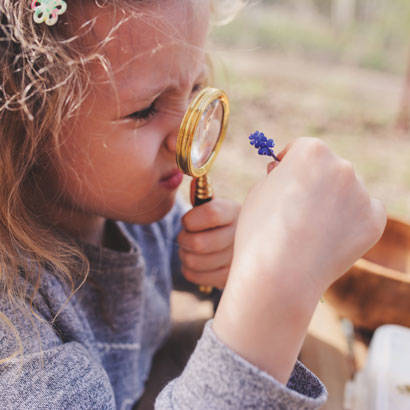
Recreationists and researchers agree that everyone benefits from being outside. It is especially important for today’s youth, who are facing more urbanization, more environmental problems and more technology, while having less access and exposure to the natural world.
There is a robust and quickly growing body of research that supports the health, social, emotional, academic and behavioral benefits for children when they spend time outside. Researchers at North Carolina State University are especially interested in the benefits nature has for environmental literacy, since building kids’ environmental literacy and connection with nature could secure a healthier, more sustainable future. The researchers posed the following questions to find out what works best:
Do kids learn better inside or outside?
Working with schools is one of the best ways to get kids involved with nature. Research has shown that having trees outside classroom windows can improve attention and test scores. Curricula that integrate the environment in meaningful ways also do this to an even greater degree, especially among students from low socioeconomic and minority backgrounds. In addition, NC State University researchers have found that kids who go outside during class time are more likely to have pro-environmental attitudes and behaviors.
So, what does this mean for parks? Park professionals can help communicate this message to schools and provide opportunities, such as facilitating school field trips to parks, to get kids outside during the school day. It may be the best chance we have to reach every child.
Does the “wildness” of nature matter?
The word “nature” can have a different connotation based on a person’s culture, history and current climate. However, when it comes to outdoor learning, not all nature is created equal. Does the nature in your front lawn or at a local park provide the most benefits? Preliminary research at NC State has shown that nature that is more “wild” — that is, less human-maintained with native vegetation — is better for increasing a child’s curiosity and interest in nature. Playing in manicured nature, such as short cut grass on a park field, does not elicit the same excitement for science and nature as playing in nature that has grown wild. This does not mean kids have to learn in a national park, but an unmown field is better than a manicured lawn, and a natural play space is better than a traditional playground.
How can we best encourage kids to connect with nature outside of school?
Although schools represent a big opportunity for reaching children, kids spend most of their time outside of schools, so it is important to consider how to set children up for a lifetime of engaging with nature. Throughout our lifetime, we will engage with nature not only of different types, but also for different lengths of time and purposes. Nature needs to be experienced alone as well as with others. The researchers at NC State have found that students who spend time outside alone on a weekly basis only feel connected to nature if they are also frequently experiencing it in a group setting, like camping or playing sports outside.
Applications
We know there are lots of opportunities for connecting kids with nature and the benefits of doing so are incredibly important. We also know that we should do what we can to promote time in nature, both in and out of school. So, what are some specific ways to incorporate this knowledge into everyday use?
Partner with schools
Programs for children in and out of school can look to nearby parks to engage with nature. Local parks and public lands provide untamed natural spaces where students can explore. Although it is important to support green schoolyard programs, such as the Children and Nature Network initiative, park and recreation managers can reach out to teachers to provide opportunities for nearby nature field trips, afterschool programs or regular class-time events.
Create wild natural environments
Lawns are good for sports, but they do not let children reap the benefits of the natural world. Children need spaces that encourage exploration, engagement and learning with nature itself. Rather than an even, manicured lawn, kids should have time in outdoor spaces that mimic untouched nature as much as possible. An area like this might have tall grasses and shrubs with natural slopes, fallen logs and rocks.
Offer multiple options for nature experiences
Promoting regular nature activities can help people engage more with the natural world. Programs in parks and at recreation centers can encourage multiple experiences, such as family stream investigations of macroinvertebrates and allow for personal time to explore wild areas, build forts, roll over logs or dig in the dirt.
Park and recreation professionals are uniquely positioned to help ensure every child has the chance to connect with nature and reap its benefits. Consider taking a few of these steps to make this vision a reality.
Rachel Szczytko is a Master of Science Student in the Department of Parks, Recreation and Tourism Management at North Carolina State University. Kathryn Stevenson, Ph.D., is a Professor in the Department of Parks, Recreation and Tourism Management at North Carolina State University.

